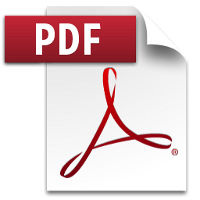 Long-term Insurance Act, 1998
Long-term Insurance Act, 1998
R 385
Mine Health and Safety Act, 1996 (Act No. 29 of 1996)Guideline for a Mandatory Code of PracticeChange Management in the South African Mining IndustryPart C: Format and Content of the Mandatory COP7. Risk management |
| 7.1 | Section 5(2) of the MHSA provides that, as far as reasonably practicable, every employer must: |
| 7.1.1 | Identify the relevant hazards and assess the related risks to which persons who are not employees are exposed. |
| 7.1.2 | Ensure that persons who are not employees, but who may be directly affected by the activities at the mine, are not exposed to any hazard to their health and safety. |
| 7.2 | Section 11 of the MHSA requires the employer to: |
| 7.2.1 | Identify hazards. |
| 7.2.2 | Assess the health and safety risks to which employees may be exposed to while at work. |
| 7.2.3 | Record the significant hazard(s) identified and risk(s) assessed. |
| 7.3 | COP must address how the significant risks identified in the risk assessment process must be dealt with, having regard to the requirements of Sections 11(2) and 11(3) of the MHSA. |
| 7.4 | As far as reasonably practicable, attempts should be made to: |
| 7.4.1 | Eliminate the risk. |
| 7.4.2 | Thereafter, to control the risk at source. |
| 7.4.3 | Thereafter, to minimize the risk. |
| 7.4.4 | Thereafter, insofar as the risk remains, provide personal protective equipment and institute a programme to monitor the risk. |
| 7.5 | To assist the employer with the hazard identification and risk assessment processes, all possible relevant information such as routine inspections, accident statistics and research reports must be considered. |
| 7.6 | In addition to the periodic review required in terms of Section 11(4) of the MHSA, the COP must be reviewed and updated, if necessary: |
| 7.6.1 | After every reportable incident or accident relating to the topic(s) covered in the COP. |
| 7.6.2 | If significant changes are introduced to procedures relating to the implementation of the COP. |